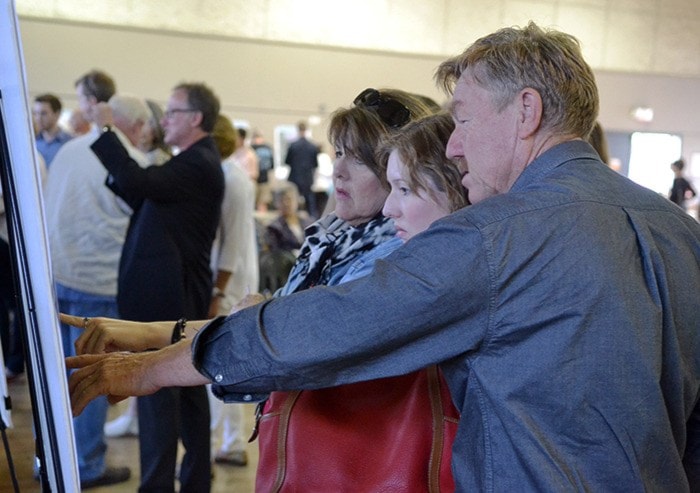A town hall meeting, meant to address the City of Surrey’s potential plans for the Campbell Heights area, seemed to instead attract a crowd concerned primarily with a proposed semi-truck parking facility.
Critics say the plan could cause serious environmental damage and put an aquifer — which provides drinking water to thousands in White Rock, Langley and Surrey — at risk for contamination.
The event, held at Shannon Hall in Cloverdale on May 31, attracted about 100 people and featured a series of placards explaining plans for more industrial land-use zoning in the area.
Don Luymes, the City of Surrey’s manager of community planning, spoke to the crowd after they had a chance to look at the area plan. He acknowledged the fact that many people had come to voice concerns over a parking lot proposed for a parcel of land south of 16 Avenue and 192 Street, but said that particular rezoning application was being handled separately from the plan up for discussion that night.
The site — which proponent GG Metro Holdings wants rezoned for industrial use — is currently zoned for agricultural use, but is not in the Agricultural Land Reserve.
Luymes did talk about the need for more industrial and other land uses in the area that would result in employment.
“There is a real concern about the shortage and potential shortage of employment lands in the region,” he said, pointing to Vancouver’s Coal Harbour and Olympic Village areas, which are changing from industrial to residential neighbourhoods.
Mike Proskow, a member of Friends of Hazelmere-Campbell Valley, expressed concern over the city’s eagerness to promote industrial activity.
“We’re moving from what is an agriculturally zoned land mass … to intermediate heavy industrial,” he said.
“That’s a quantum shift in any land use process.”
“They haven’t done any work and yet they’re quite prepared to go ahead with a very contentious and potentially very dirty industry, right smack dab in the middle of what is has been defined by scientists as a shallow unconfined aquifer — which means in it’s near the surface and it stretches from White Rock, out to Abbotsford and it tips down below the border into Washington.”
